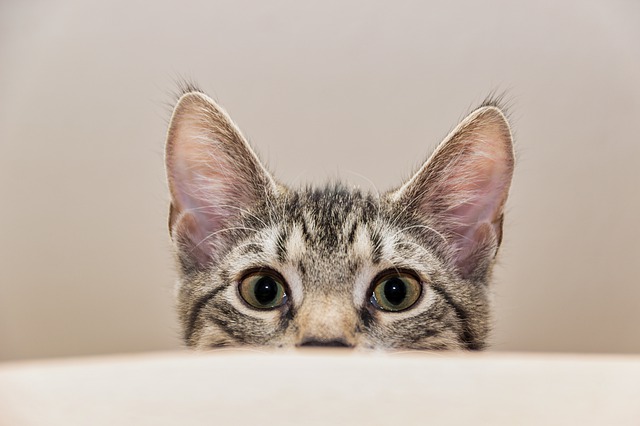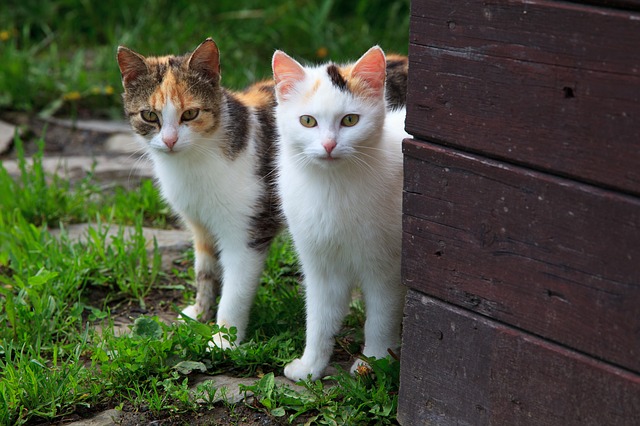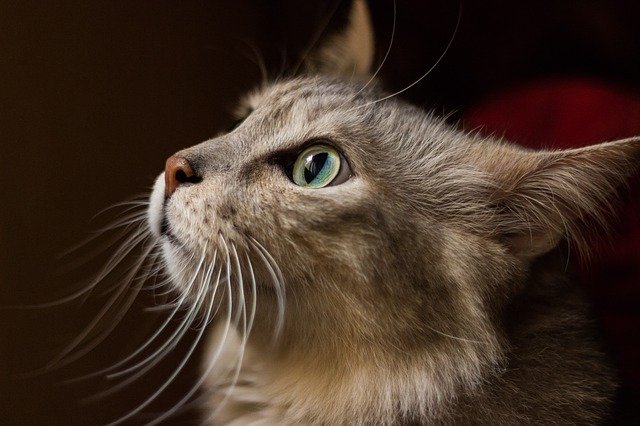Training your canine friend to come to you is much easier than doing the same for your kitty.
The former has been domesticated for about 30 millennia and has learned the art of obedience quite well.
Cats, on the other hand, are still catching up. They have only been pets for about 10,000 years and for most of it, they were more into hunting birds and rodents than creating strong bonds with humans.
Luckily, these furballs can also be trained to respond to calls from their owners.
It can be quite frustrating when you shout out your kitty’s name and get nothing.
Most kitties are intelligent enough to know that they are being called but they hit the ‘ignore’ button.
You need to exercise some wisdom to make your cuddle baby come to you.
To make your work easier, here is a quick overview of 5 sounds that make cats come to you.
1. Pspspsps sound

Every cat owner is probably aware of the charm of the “pspspsps” sound during cat ownership.
There’s something about this sound that gets cats running towards you.
According to Reader’s Digest, felines recognize this line because they got used to it. The sound is likely a version of “here pussy pussy pussy” which has been passed down from generation to generation.
If you know one or two things about these creatures, you’ll confirm that they adapt to what is going on around them. After years and years of being called in this manner, cats learned what it means.
Another probable reason why “pspsps” works effectively is because it is high-pitched.
Kitties have a knack for such voices. The reason is that they can recognize high frequencies much better than humans can.
When you hum this special sound, do it on a high frequency that your kitty can identify and come to you.
2. High-Pitched Sounds

Speaking of high-frequency sounds, you can also go this route to get your cat to come to you.
For instance, instead of calling his name using your usual voice, try going higher a little and see if the pet will respond.
If she’s already trained on how to recognize certain words such as “come” or “here”, you can try doing that with a high-pitched tone to get her to pay attention to you.
While you are at it, be careful to not push it. Although mousers identify high-frequencies sounds better than we can, they don’t necessarily like them.
It actually annoys them to the core. According to this article on Mirror.co.uk, certain sudden high-pitched sounds can harm them. These include things like juggling of keys or chinking of glass.
If the sound is too much, your kitty may lose consciousness, make an involuntary jerking movement, or just act weird.
As you make the sounds, be careful not to upset your pet in the process.
3. Meow Sounds

Even a rookie cat parent knows that cats cannot resist the sound of another cat. These special beings use sounds to communicate in their world.
If you find a way to meow, you will get the attention of your kitty. That’s more than guaranteed.
This is especially true if you have a single kitty at home. The thought of having another cat at home will send the pet running to you.
Since you don’t have the capacity to meow, your best bet is to record your kitty while doing it and use it in the future as the need arises.
With the endless recording devices of today’s world, doing this will be a piece of cake.
If you are not in a position to make the recording yourself, find some online.
Whether it is social media, YouTube, or Google, you will bump into endless cat meow videos to utilize. Here is an excellent Download from Amazon that you can try.
4. Treat Bag Sounds

Care to know why cats don’t care to show up when they are called?
Well, the reason is simple; she needs a big motivation to respond to the call.
Your mouser is mostly driven by food. Back in the day, everything her ancestors did revolved around food.
You may not believe it but your kitty is still as food-oriented as her ancestors.
She does most of the things to get a treat or plate of food. This includes cuddling, petting, and following you around.
Now that you know this fact, why not take advantage of it to get your cat to come to you?
Grab her favorite treat and rip the bag open slowly to whet her appetite.
Of course, she has to be close by so she can tell what’s going on. The minute she realizes that a treat is around the corner, she will come running to you.
In all honesty, this is not the best strategy to use as it teaches the pet to come only when there’s a treat for her.
However, if you are desperate, there’s no harm in implementing it. Just don’t make a habit of it.
5. Clicking Sound

If you know how to click well with your tongue, use that to signal your cat to come to you also.
Those that have owned cats for a while may be conversant with a training method called clicker training.
As the name goes, this is a technique of teaching a cat to come by making a clicking sound.
Often, a metal and plastic device called a clicker is pressed to emit the desired clicker noise.
When a kitty obeys, she is given a treat as a reward. In the end, she will understand that every time she hears the clicker being pressed, she should get out of hiding and approach her owner.
An actual clicker is the best tool to use here. It produces a high-pitched clicking sound that catches the attention of your kitty fast.
However, you can also go the old version way and click with your tongue then hope for the best.
Parting Thoughts
Does your cat act stubborn when you call her?
Perhaps you haven’t mastered the skill of using the right sounds to entice her.
The ones mentioned here will solve your problem once and for all.
As long as you keep giving her treats when she responds, she will become more and more obedient.

Hi! I am Eleanor Price. I started this website after my cat, Louie, almost died from a case of botulism (a type of food poisoning often caused by bacteria that grow on food items). Turned out that my cat’s diet was the problem. I have made it my duty to provide the best information and recommendations about everything cat lovers need to know about their felines’ health and wellbeing. My goal is to find the most informative content on anything feline-related and share it with fellow hardworking kitty lovers.

